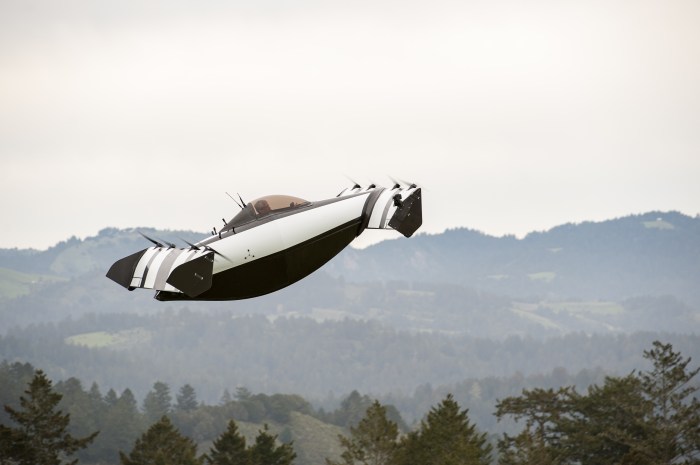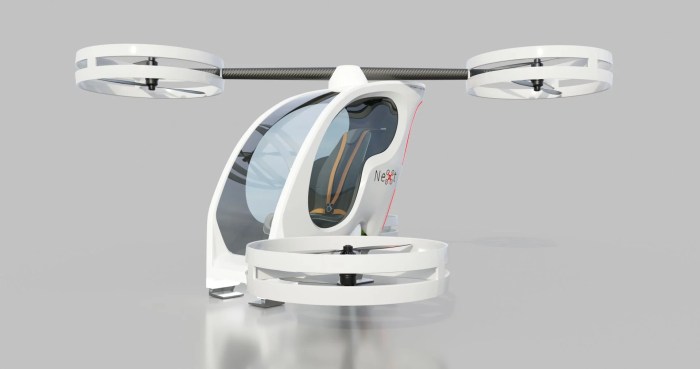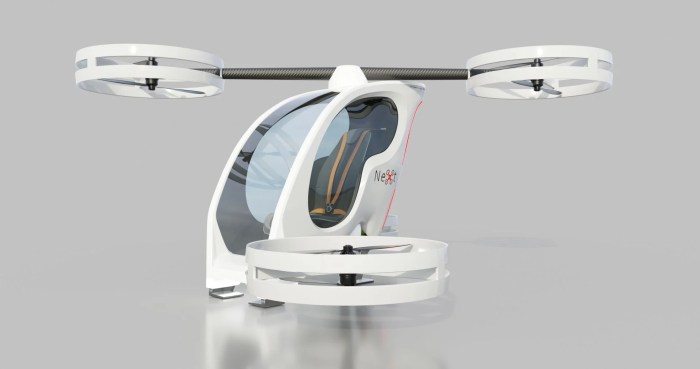Flyboard franky zapata airscooter evtol – Flyboard, Franky Zapata, Airscooter, and EVTOL – these terms might sound like they belong in a futuristic sci-fi movie, but they’re actually shaping the present and future of personal flight and urban transportation. From the exhilarating water-powered Flyboard to the ambitious Airscooter and the burgeoning EVTOL (Electric Vertical Take-Off and Landing) technology, we’re on the cusp of a new era of personal mobility.
This journey takes us from the pioneering spirit of Franky Zapata, the inventor of the Flyboard, to the cutting-edge innovations driving the development of flying cars and air taxis. We’ll explore the technology behind these advancements, the challenges they face, and the potential impact they’ll have on our cities and lives.
Flyboard Technology

The Flyboard, a personal water-propelled flying device, has revolutionized water sports and captured the imagination of adventure seekers worldwide. This innovative technology, born from the ingenuity of Franky Zapata, has evolved significantly since its inception, offering a thrilling experience of soaring above the water’s surface.
History and Evolution of Flyboard Technology
The origins of Flyboard technology can be traced back to 2011 when Franky Zapata, a French inventor and jet ski enthusiast, envisioned a way to propel himself into the air using water pressure. This vision led to the creation of the first Flyboard, a device that utilized a powerful water jet pump connected to a pair of water boots.
The initial Flyboard model was relatively simple, with limited control and maneuverability. However, it laid the foundation for the remarkable advancements that would follow.Over the years, Flyboard technology has undergone significant evolution, driven by continuous innovation and the pursuit of enhanced performance and safety.
Key milestones include:
- Improved Water Propulsion System:The water propulsion system has been refined to deliver greater thrust and efficiency, enabling higher altitudes and extended flight times. This involved advancements in pump design, water intake, and nozzle technology.
- Enhanced Control Mechanisms:The control mechanisms have become more sophisticated, providing riders with greater precision and responsiveness. This includes the introduction of intuitive hand controls, foot pedals, and gyroscopic stabilization systems.
- New Flyboard Models:The Flyboard family has expanded to include various models catering to different skill levels and preferences. These models offer a range of features, including different power outputs, flight stability, and customization options.
Working Principles of Flyboard
The Flyboard operates on the principle of water propulsion, harnessing the power of a high-pressure water jet to lift and propel the rider into the air. The system comprises a water jet pump, a control unit, and a pair of water boots.
- Water Jet Pump:The heart of the Flyboard system is a powerful water jet pump that draws water from the surrounding body of water. This pump generates a high-pressure jet of water, directed towards the water boots.
- Control Unit:The control unit, typically mounted on the rider’s wrist or chest, allows for precise control over the direction and intensity of the water jet. It enables the rider to ascend, descend, turn, and perform various maneuvers.
- Water Boots:The water boots, worn by the rider, are connected to the water jet pump via hoses. These boots are designed to direct the water jet downwards, generating the upward thrust that lifts the rider into the air.
Flyboard Models, Flyboard franky zapata airscooter evtol
The Flyboard market offers a diverse range of models, each designed to cater to specific user needs and preferences. Here are some of the most popular Flyboard models:
- Flyboard Original:The original Flyboard model, renowned for its simplicity and affordability, is a great entry point for beginners. It features a basic control system and provides a stable flight experience.
- Flyboard Pro:The Flyboard Pro model offers enhanced performance and features, including a more powerful water jet pump, improved control mechanisms, and advanced stability features. It is suitable for experienced riders seeking greater agility and maneuverability.
- Flyboard Air:The Flyboard Air is a revolutionary model that utilizes a jetpack-like design, eliminating the need for a water connection. It relies on a powerful turbine engine to generate thrust, enabling extended flight times and higher altitudes. This model is aimed at advanced riders seeking ultimate freedom and performance.
You also can investigate more thoroughly about dutch students use iron balls safe hydrogen storage and transport to enhance your awareness in the field of dutch students use iron balls safe hydrogen storage and transport.
Safety Features and Protocols
Safety is paramount in Flyboard use. The manufacturers of Flyboard devices incorporate a range of safety features and protocols to minimize risks and ensure a safe and enjoyable experience.
- Emergency Stop Button:All Flyboard models are equipped with an emergency stop button, allowing the rider to instantly shut off the water jet in case of an emergency.
- Safety Tether:A safety tether connects the rider to the watercraft, providing a secure connection and allowing for quick retrieval in case of a fall.
- Life Vest:Wearing a properly fitted life vest is mandatory when using a Flyboard, providing buoyancy and support in case of an emergency.
- Training and Certification:It is highly recommended to undergo proper training and obtain certification from a qualified instructor before operating a Flyboard. This ensures that riders are familiar with the device, its operation, and safety protocols.
Franky Zapata’s Contributions

Franky Zapata, a French inventor and daredevil, is a pioneer in the field of personal flight and water sports. His passion for innovation has led to the development of groundbreaking technologies, including the iconic Flyboard, and his work has significantly impacted the industry.
The Rise of Flyboard Technology
Zapata’s journey began with a desire to explore the possibilities of water-powered flight. His relentless pursuit of this dream led to the invention of the Flyboard, a revolutionary device that allows users to soar above water using the power of a jet ski’s thrust.
The Flyboard’s success can be attributed to Zapata’s innovative design, which combines a powerful water jet propulsion system with intuitive controls, allowing for effortless maneuverability and a thrilling flying experience. The Flyboard quickly gained popularity worldwide, captivating audiences with its awe-inspiring demonstrations and pushing the boundaries of water sports.
Notable Achievements and Innovations
Zapata’s accomplishments extend far beyond the Flyboard. He has consistently pushed the limits of flight technology, developing a series of advanced aerial vehicles. One of his most notable achievements is the creation of the Flyboard Air, a personal jetpack powered by a turbine engine.
The Flyboard Air allows users to fly freely in the air, opening up a new dimension of aerial exploration.
Pushing the Boundaries of Personal Flight
Zapata’s work has been instrumental in advancing the field of personal flight. His inventions have not only revolutionized water sports but have also sparked a new era of exploration and innovation. His vision for the future of flight extends beyond recreational use, with plans to develop advanced flight technologies for a variety of applications, including transportation, search and rescue, and even military operations.
Vision and Future Plans
Zapata envisions a future where personal flight becomes commonplace, allowing individuals to travel freely and explore the world from a new perspective. He believes that his innovations will contribute to the development of sustainable and efficient flight technologies, ultimately transforming the way we travel and interact with our surroundings.
His dedication to pushing the boundaries of what’s possible in the realm of flight continues to inspire generations of inventors and dreamers.
The Airscooter
The Airscooter, a brainchild of Franky Zapata, represents a paradigm shift in personal transportation, promising a future where soaring through the skies is no longer a dream but a reality. This innovative flying machine, designed to be user-friendly and accessible, is poised to revolutionize how we move, explore, and interact with our environment.
Design and Features
The Airscooter’s design is a testament to Zapata’s visionary approach, blending cutting-edge technology with aerodynamic principles. It features a compact, lightweight frame constructed from high-strength materials, ensuring both durability and maneuverability. The key to its flight lies in its innovative propulsion system, which utilizes a combination of electric motors and powerful jet engines, enabling vertical takeoff and landing (VTOL) capabilities.
This allows the Airscooter to navigate congested urban environments with ease, eliminating the need for traditional runways.
Technology Behind the Airscooter
The Airscooter’s technology is a marvel of engineering, seamlessly integrating advanced components to deliver a safe and exhilarating flying experience.
- Propulsion System:The Airscooter’s propulsion system is the heart of its operation. It employs a combination of electric motors and jet engines, offering a powerful and efficient means of flight. The electric motors provide initial lift and hover capabilities, while the jet engines generate the thrust required for sustained flight and maneuvering.
This hybrid approach allows for both quiet and efficient operation, making it suitable for various environments.
- Control Mechanisms:The Airscooter’s control mechanisms are designed for intuitive operation, enabling users with minimal training to take to the skies. The aircraft is equipped with a sophisticated flight control system that utilizes sensors and algorithms to maintain stability and respond to pilot input.
This system allows for precise maneuvering and safe operation, even in challenging conditions.
- Safety Features:Safety is paramount in the design of the Airscooter. It incorporates a range of advanced safety features to mitigate risks and enhance the flying experience. These features include redundant systems, emergency landing mechanisms, and advanced collision avoidance technology, ensuring a high level of safety for both the pilot and surrounding environment.
Potential Applications
The Airscooter’s versatility opens up a wide range of potential applications, extending beyond personal transportation to encompass various sectors.
- Transportation:The Airscooter has the potential to revolutionize urban transportation by providing a faster, more efficient, and less congested mode of travel. Imagine soaring above traffic jams, reaching destinations in a fraction of the time it takes to navigate crowded streets.
This could significantly reduce commute times, boost productivity, and enhance the overall quality of life in urban areas.
- Recreation:The Airscooter’s ability to provide a thrilling and unique flying experience makes it an ideal choice for recreational activities. Picture yourself exploring scenic landscapes, experiencing the exhilaration of flight, and capturing breathtaking aerial views. The Airscooter could become a popular choice for adventure enthusiasts, thrill-seekers, and those seeking a new way to connect with nature.
- Emergency Services:The Airscooter’s agility and speed make it a valuable tool for emergency services. Imagine paramedics reaching accident scenes faster, firefighters accessing remote areas with ease, and search and rescue teams responding to disasters with greater efficiency. The Airscooter’s ability to navigate difficult terrain and reach inaccessible locations could significantly enhance the effectiveness of emergency response efforts.
Challenges and Opportunities
The development and adoption of personal flying vehicles like the Airscooter present both challenges and opportunities.
- Regulation and Safety:Establishing clear regulations and ensuring the safety of personal flying vehicles is paramount. Governments and regulatory bodies need to develop comprehensive frameworks that address issues such as airspace management, pilot licensing, and aircraft certification. This will be crucial to ensure the safe integration of these vehicles into existing airspace and minimize potential risks.
- Infrastructure and Accessibility:The widespread adoption of personal flying vehicles will require investments in infrastructure, such as charging stations and landing pads, to support their operation. This will involve collaborations between governments, private companies, and communities to create a supportive ecosystem for these vehicles.
Additionally, ensuring accessibility to these vehicles for a broad range of users, including those with disabilities, will be crucial for their widespread adoption.
- Public Perception and Acceptance:Public perception and acceptance are critical factors in the success of personal flying vehicles. Addressing concerns related to noise pollution, privacy, and potential hazards will be essential to gain public trust and support. Educational initiatives, public demonstrations, and ongoing dialogue will be crucial in shaping a positive perception of these vehicles and promoting their safe and responsible use.
EVTOL: Flyboard Franky Zapata Airscooter Evtol

The future of urban transportation is taking flight, literally. EVTOL, or Electric Vertical Take-Off and Landing, aircraft promise to revolutionize how we navigate our cities. These futuristic vehicles are poised to transform congested urban landscapes into interconnected aerial networks, offering a faster, cleaner, and more efficient mode of travel.
Advantages and Challenges of EVTOL Technology
EVTOL technology holds immense potential for alleviating urban transportation woes. By soaring above congested streets, these aircraft offer a faster and more direct route, reducing travel time and improving efficiency. Additionally, their electric propulsion systems eliminate harmful emissions, contributing to cleaner air and a more sustainable future.
However, the widespread adoption of EVTOL faces significant challenges. One major hurdle is the development of robust regulatory frameworks and infrastructure to ensure the safe integration of these aircraft into existing airspace. Furthermore, the high cost of development and production, along with concerns about noise pollution and public acceptance, need to be addressed before EVTOL can become a mainstream mode of transportation.
Types of EVTOL Aircraft
The EVTOL landscape is characterized by a diverse range of aircraft designs, each catering to specific needs and target markets. Here are some prominent types:
- Multicopter Drones:These aircraft utilize multiple rotors for lift and propulsion, offering high maneuverability and vertical takeoff and landing capabilities. They are ideal for short-range passenger transport and cargo delivery, especially in densely populated urban areas. Examples include the EHang 216 and the Volocopter 2X.
- Fixed-Wing Aircraft:These aircraft resemble traditional airplanes but incorporate electric propulsion systems and vertical takeoff and landing capabilities. They offer longer ranges and higher speeds, making them suitable for intercity travel. Notable examples include the Joby Aviation S4 and the Lilium Jet.
- Hybrid Aircraft:Combining elements of both multicopters and fixed-wing aircraft, hybrid designs leverage the advantages of both technologies. These aircraft can transition from vertical takeoff and landing to forward flight, offering a balance of maneuverability and efficiency. The Archer Aviation Midnight is a prime example of a hybrid EVTOL design.
Regulatory Landscape and Infrastructure Requirements
The safe and efficient integration of EVTOL into urban environments necessitates a comprehensive regulatory framework and substantial infrastructure development.
- Air Traffic Management:Developing robust air traffic management systems is crucial to ensure the safe and orderly flow of EVTOL aircraft within urban airspace. This involves establishing designated flight corridors, implementing collision avoidance technologies, and integrating EVTOL operations into existing air traffic control systems.
- Infrastructure Development:EVTOL operations require dedicated landing and charging infrastructure, such as vertiports and charging stations. These facilities need to be strategically located within urban areas, providing convenient access for passengers and accommodating the specific requirements of different EVTOL aircraft types.
- Safety and Certification:Stringent safety standards and certification processes are essential to ensure the reliability and safety of EVTOL aircraft. These processes need to be comprehensive and transparent, covering aspects such as aircraft design, performance, and operational procedures.





